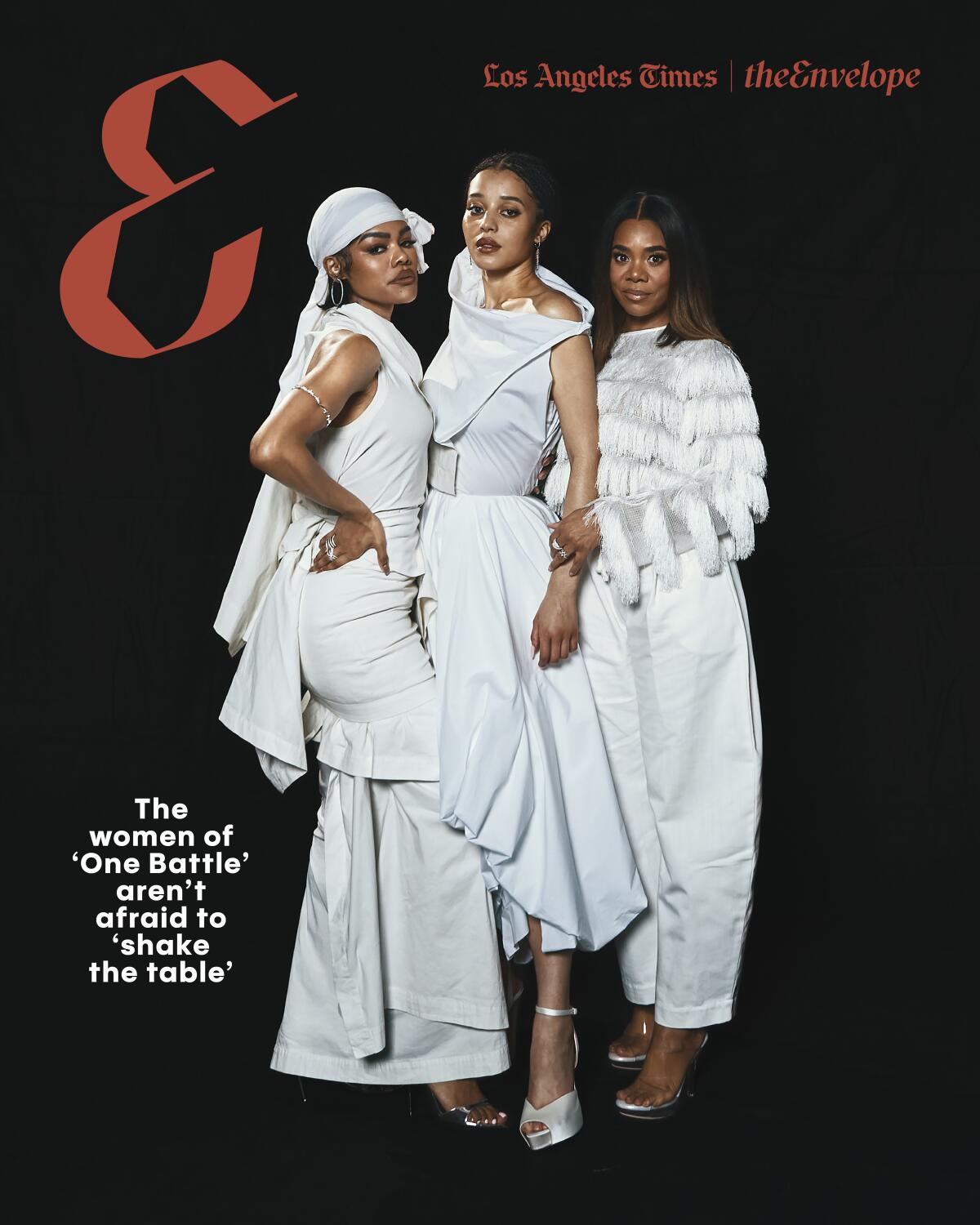‘One Battle After Another’: Perfidia and Deandra friendship, explained
’Tis the season of Top 10 lists. On occasion, being at the bottom of the list is a plus.
I’m Glenn Whipp, columnist for the Los Angeles Times and host of The Envelope newsletter, wondering if you’ve felt that 1% decrease in traffic congestion this year. I had plenty of time to contemplate its veracity the other day while inching my way down the 405 Freeway on my drive home. Let’s just say I’m unconvinced.
Let’s think happier thoughts — the continued, sweeping success of the year’s best movie, “One Battle After Another.”
This week’s digital cover story

(Bexx Francois / For The Times)
I spoke with the women of Paul Thomas Anderson’s acclaimed epic, “One Battle After Another,” on a rainy day last month in the midst of that atmospheric river that washed through the city. You want to talk traffic congestion? Try going down San Vicente during rush hour on the way to a premiere at the Academy Museum.
The only movie worth that effort this year might be … “One Battle After Another.”
For our Envelope digital cover story, we gathered stars Regina Hall, Chase Infiniti and Teyana Taylor for a stunning photo shoot with Times contributor Bexx Francois, followed by a conversation accompanied by a slate of appetizers that evoked memories of the night before when Taylor’s French fries went missing at their Governors Awards table.
“I went to the bar during the dinner and came back,” Taylor says. “And Regina’s like, ‘Somebody took my plate.’ And I look down and say, ‘Somebody ate my fries.’” She motions at Hall. “Goldilocks over here.”
There were no beefs over the apps that day, just the kind of camaraderie evident by the care Infiniti showed her co-stars, helping them keep their immaculate outfits pristine. “One Battle After Another” feels like a lock for a Screen Actors Guild Award (now known as the Actors) ensemble nomination, in no small part due to the exemplary work of these three women, along with co-stars Leonardo DiCaprio, Sean Penn and Benicio Del Toro.
Taylor won a supporting actor prize Sunday from the Los Angeles Film Critics Assn. for her portrayal of Perfidia Beverly Hills, the revolutionary leader of the French 75. The character dominates the movie’s 35-minute opening section, an extended prologue that ends with Perfidia betraying members of her group to avoid prison and abandoning her daughter in the haze of postpartum depression.
“Perfidia anchors this movie,” Taylor says. “We got a boat ride to the middle of the ocean and we gonna anchor this boat, and when we anchor this boat, I’m done.” She turns to Hall. “Then I need you to get on your jet ski and go.”
Taylor loves Perfidia, as do Infiniti and Hall. She’s protective of the character, admitting that, yes, Perfidia is selfish. But also: She has her reasons.
We talked about a scene that Anderson cut from the film featuring Perfidia and Hall’s steadfast Deandra, another member of the French 75. Perfidia calls Deandra from custody, Sean Penn’s Lockjaw lurking in the background, and tells Deandra, “Remember those baby socks I was telling you about? I need you to go out and get them.”
It’s code: Perfidia wants Deandra to make sure that she takes care of her baby, Willa, and get out of town.
“When people have certain opinions of Perfidia, that’s the part of her that they didn’t see,” Taylor says. “People write her off, but she made that phone call.”
“Perfidia and Deandra are best friends,” Hall says. “Watching the movie, you can feel that. But that scene made it clear.”
“But in hindsight,” Taylor says, “artistically that scene would not have made sense. We needed Perfidia to be selfish.”
“She’s not selfish,” Infniti, who plays Willa, interjects. “She was doing the only thing she felt she could do.”
“That’s true,” Taylor replies. “But she’s also selfish. That’s why I think Paul is a f— genius. He is a mad scientist. He really knew what to do with this movie to create a healthy dialogue. He got people talking.”
